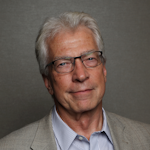Proposed National Quantum Initiative is subject of U.S. House Committee hearing
On October 24, the House Committee on Science, Space and Technology Subcommittee on Research and Technology and Subcommittee on Energy today held a joint hearing on "American Leadership in Quantum Technology." It included testimony on behalf of the National Photonics Initiative (NPI) by Christopher Monroe, professor of physics at the University of Maryland and founder and chief scientist at IonQ (College Park, MD), which is developing a general purpose quantum computer. Also testifying were Scott Crowder, VP and CTO for quantum computing, IBM Systems Group, and senior administrators for several national labs.
Monroe's testimony addressed the need for a National Quantum Initiative to create the physical and human infrastructure needed to move the U.S. into a leadership position in quantum information technology, a field that will create great opportunities for job creation, economic growth, and betterment of society across areas as diverse as health outcomes and information security. Currently, countries including China, Australia, and Canada, as well as the European Union, are heavily investing in major initiatives to advance quantum information science while efforts in the U.S. remain decentralized.
In a white paper published earlier this year titled, A Call for a National Quantum Initiative, the NPI detailed how US investment in a National Quantum Initiative will accelerate the development of commercially available quantum-based technologies to facilitate growth in the US economy and keep pace with accelerating international competition.
Related: German quantum initiative QUTEGA starts with optical single ion clock
Related: Wavefront coding for efficient quantum communication
To read the full testimonies and see a video of the meeting, click on this link to the House Committee on Science, Space and Technology site: https://goo.gl/2XwqEq
Source: National Photonics Initiative

Conard Holton
Conard Holton has 25 years of science and technology editing and writing experience. He was formerly a staff member and consultant for government agencies such as the New York State Energy Research and Development Authority and the International Atomic Energy Agency, and engineering companies such as Bechtel. He joined Laser Focus World in 1997 as senior editor, becoming editor in chief of WDM Solutions, which he founded in 1999. In 2003 he joined Vision Systems Design as editor in chief, while continuing as contributing editor at Laser Focus World. Conard became editor in chief of Laser Focus World in August 2011, a role in which he served through August 2018. He then served as Editor at Large for Laser Focus World and Co-Chair of the Lasers & Photonics Marketplace Seminar from August 2018 through January 2022. He received his B.A. from the University of Pennsylvania, with additional studies at the Colorado School of Mines and Medill School of Journalism at Northwestern University.
